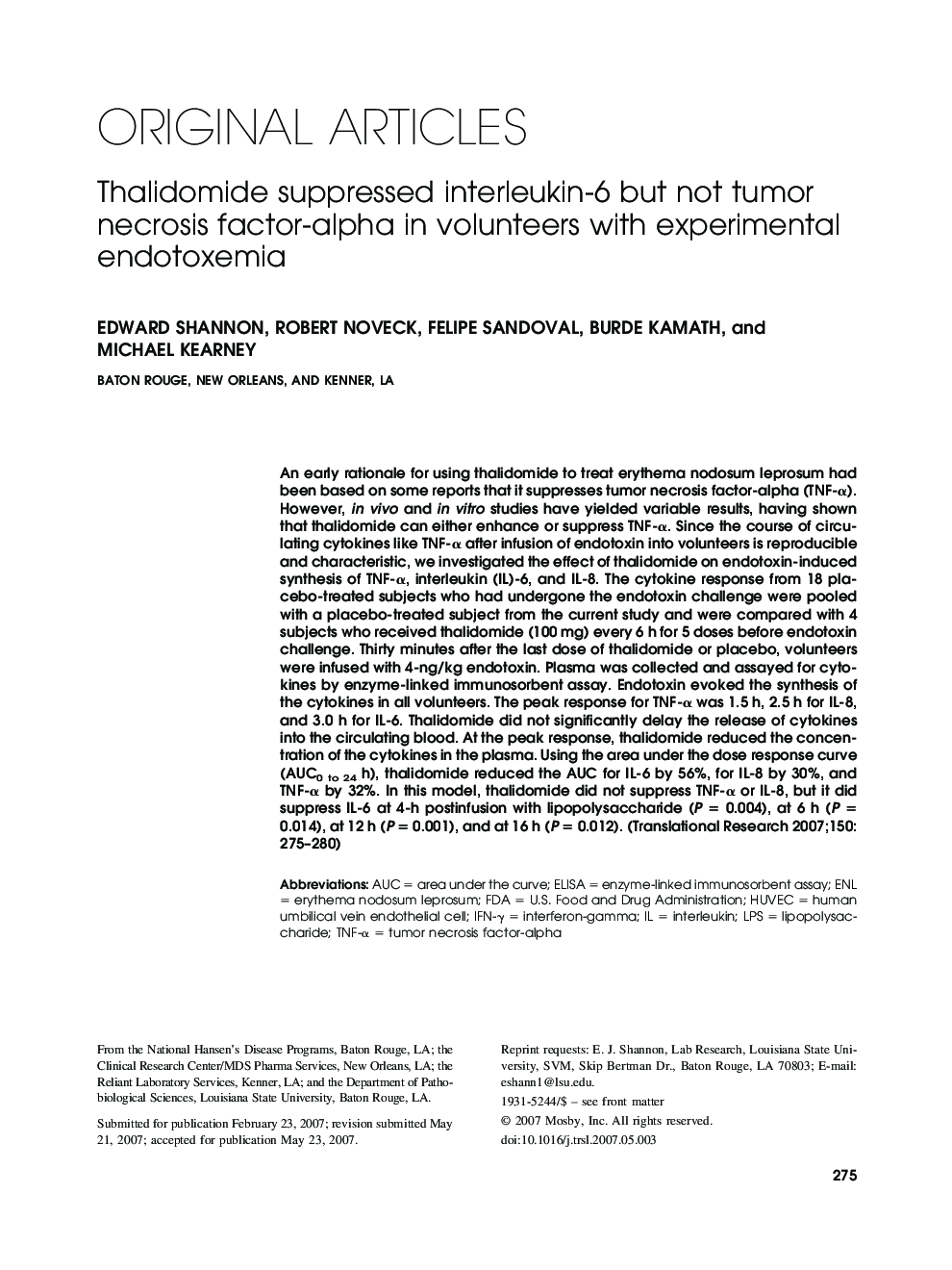| Article ID | Journal | Published Year | Pages | File Type |
|---|---|---|---|---|
| 3841444 | Translational Research | 2007 | 6 Pages |
An early rationale for using thalidomide to treat erythema nodosum leprosum had been based on some reports that it suppresses tumor necrosis factor-alpha (TNF-α). However, in vivo and in vitro studies have yielded variable results, having shown that thalidomide can either enhance or suppress TNF-α. Since the course of circulating cytokines like TNF-α after infusion of endotoxin into volunteers is reproducible and characteristic, we investigated the effect of thalidomide on endotoxin-induced synthesis of TNF-α, interleukin (IL)-6, and IL-8. The cytokine response from 18 placebo-treated subjects who had undergone the endotoxin challenge were pooled with a placebo-treated subject from the current study and were compared with 4 subjects who received thalidomide (100 mg) every 6 h for 5 doses before endotoxin challenge. Thirty minutes after the last dose of thalidomide or placebo, volunteers were infused with 4-ng/kg endotoxin. Plasma was collected and assayed for cytokines by enzyme-linked immunosorbent assay. Endotoxin evoked the synthesis of the cytokines in all volunteers. The peak response for TNF-α was 1.5 h, 2.5 h for IL-8, and 3.0 h for IL-6. Thalidomide did not significantly delay the release of cytokines into the circulating blood. At the peak response, thalidomide reduced the concentration of the cytokines in the plasma. Using the area under the dose response curve (AUC0 to 24 h), thalidomide reduced the AUC for IL-6 by 56%, for IL-8 by 30%, and TNF-α by 32%. In this model, thalidomide did not suppress TNF-α or IL-8, but it did suppress IL-6 at 4-h postinfusion with lipopolysaccharide (P = 0.004), at 6 h (P = 0.014), at 12 h (P = 0.001), and at 16 h (P = 0.012).
